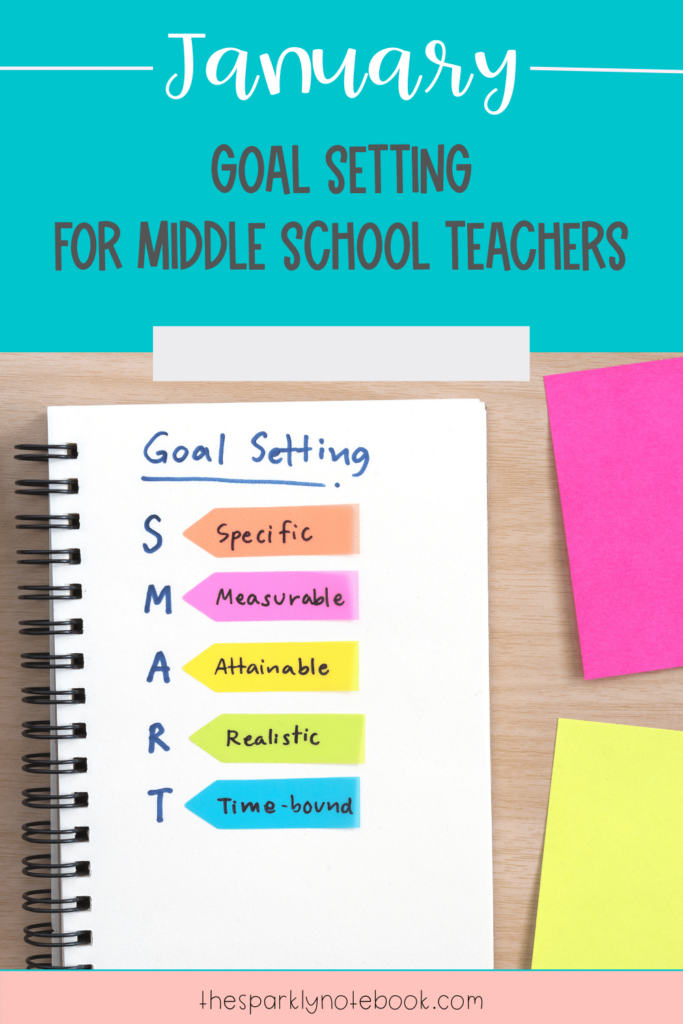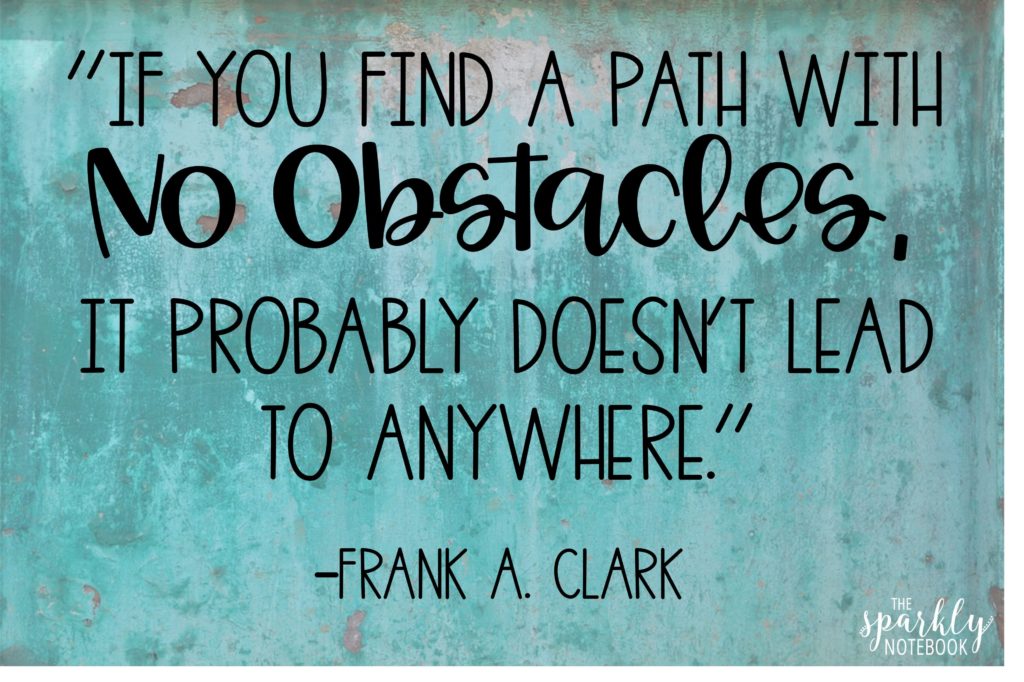January goal setting as middle school teachers is a process that keeps personal needs, classroom community, and academic success at the forefront of our minds.
Does it ever feel like the students you start the year with are not the same students you see every day in January?
It’s because they aren’t. Especially if you are a middle school teacher.
This is because puberty is a crazy, complicated process. It can happen at any time and can even last several years.
In short, your students may look like the darlings you started the year teaching, but they’re not the same. Their needs, interests, and even their level of comfort sitting in desks may have changed in the last couple months.
When we begin our January goal-setting as middle school teachers, we are keeping all these changes in mind.
Depending on how the fall has gone, we are ready to make some big, audacious goals for the rest of the year, but this time, we actually know our students. We know what they can handle, how they work through problems, what topics excite them, and what topics don’t.
We love that we get to ‘start over’ after our winter break, and truly set some goals with THESE students in mind.
When starting your January goal setting as middle school teachers, you want to spend a little time questioning your students. This could happen before the winter break ever starts
“Hey, I’m going to be setting some new professional goals for this spring during winter break, and I’d love to have your input on…”
Or you can start the process after break.
“Hey! During break I was reflecting on the year so far, and I’ve decided I want to set a few new professional goals. I’d love to know what you think of…”
No matter when you start to set your goals, you’ll want to have at least three different kinds.
- One personal (something that has nothing to do with school)
- One community-based (focused on the atmosphere or community of the classroom)
- One academic (based on student success so far and where you want them to get)
Let’s dive into each, but first… a note about SMART goals.

SMART Goals
As educators, you may already be familiar with SMART goals. If you are, this is your friendly reminder to use SMART goals as you being this January goal-setting journey.
SMART goals are Specific, Measurable, Attainable, Relevant, and Time-Bound. You can learn more about how we set SMART goals in this blog post.
Quick History Lesson: SMART goals date back to the 1980s. The idea was first discussed by George Doran, Arthur Miller, and James Cunningham in an article about good management.
Personal Goals
Let’s start with a personal goal.
Setting personal goals is important as they remind us that we are people with needs, interests, and wants. Setting a good goal related to one of these gives teachers some motivation outside the classroom. The accomplishment of achieving these goals will also directly affect your mood and general level of joy in the classroom.
They are the MOST important, so we’re putting the personal goal at the top of our list.
As we begin setting January goals as middle school teachers, we are going to focus on one specific personal goal. This can be something related to money, health, habits, or even a hobby or relationship. It does not in any way have to be related to school or any job.
Make this one personal, and something that will truly bring you joy if you accomplish it!
Community-Based Goals
Before focusing too heavily on academics, let’s spend some time setting a goal related to the community of the classroom.
Now, this doesn’t have to be classroom specific. If you have a goal you want to set for the lunchroom or a school club, you can follow your heart. However, we definitely want this goal to be about improving the culture of the school or your classroom.
We recommend getting your students involved in helping you come up with a topic for this community-based goal. Students have been coming in and out of your room for months, they have ideas. This is a great time to let them share those ideas.
As we stated before, when working through January goal setting as middle school teachers, we have to keep our students’ personal changes in mind. If they say they want you to have more seating options, it may not be because they want to get cozier. They may legitimately NEED taller chairs because they don’t fit in the ones you have now. If they want different rules about going to the bathroom, it may be because they are worried they won’t have the flexibility if they NEED the restroom.
Take the time to consider student suggestions. Then put some goals in place to support your classroom community or improve procedures.
Remember: Goals don’t have to last the whole semester. They may only take a week to accomplish.
Share your goals with your students. They can learn a lot from watching you set a goal and then knocking the follow-through out of the park.
Academic-Based Goal Setting
Finally, we are going to spend some time setting academic goals. These goals are standards or skills-based, and most likely student-focused.
To set this goal, go through your class standards, review where our students are, and figure out where you want them to end up.
Use this Common Core Standard Checklist to identify the areas on which your students still need to focus. Use the information you gain from the reflection to pick a goal (or two) to start with.
Again, these goals may not last the whole semester, so don’t be afraid to hunker down to a specific standard.
We’ve created a whole series of focused lessons and units for each standard, so if you decide that you really want to focus on RL.7.5: Analyzing Text Structure and Form of Drama and Poems, you can use this link to find the resources to specifically work on that standard.
Once you’ve identified the SPECIFIC standard you want to focus on, you can use the resource to MEASURE student success, pick the lessons and activities that will make it ATTAINABLE and RELEVANT, and set realistic TIME-BOUND details for your goal based on the provided teacher’s guide in each standards-focused resource.
Change is going to happen in middle school. When we do our January goal-setting as middle school teachers, we are showing a willingness to embrace that change and roll with it.
Setting personal, community-based, and academic goals in January will set you up to have a productive semester both inside and outside the classroom. Hopefully, this post has given you some great ideas to get started with each type of goal.
Remember, be SMART with your goals, and encourage your students to do the same!
























